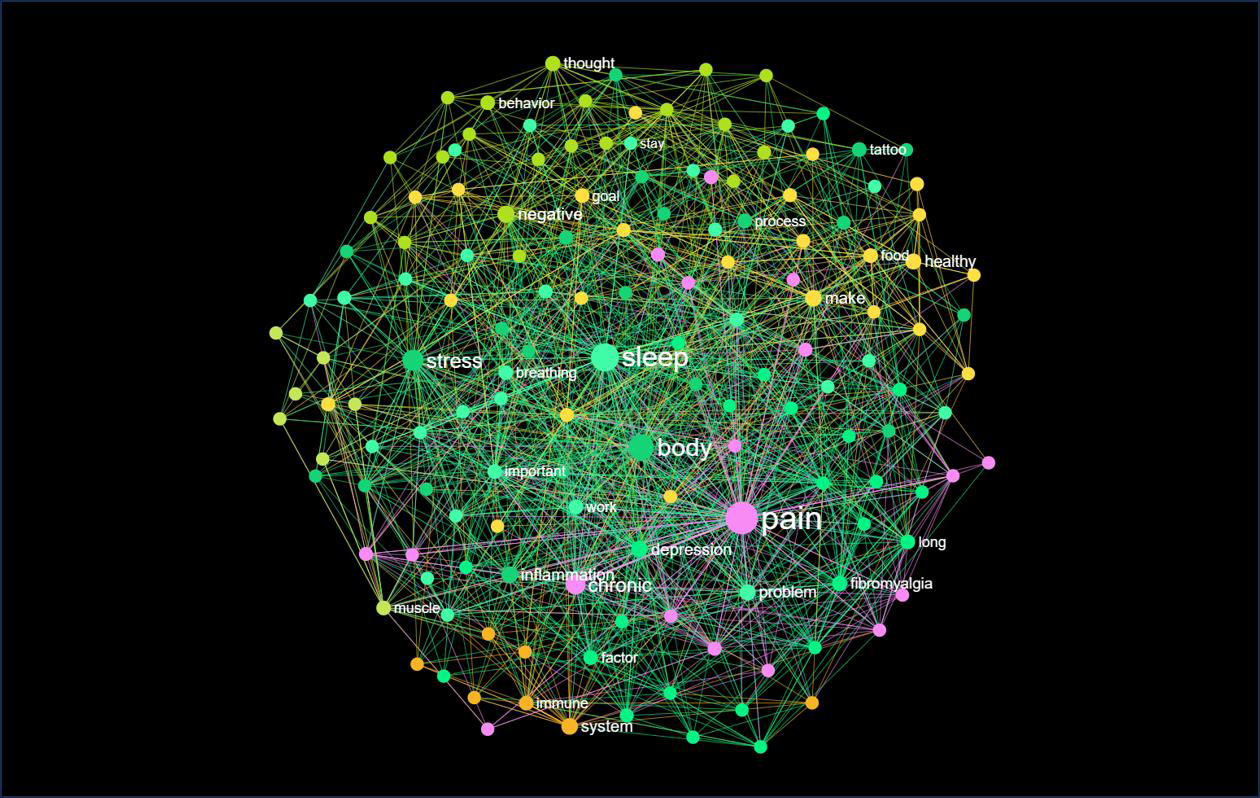

Background: Digital therapeutics (DTx) in the form of mobile Health (mHealth) self-management programs have shown efficacy in reducing disease activity in different rheumatic diseases, including fibromyalgia and arthritis. They are mostly based on cognitive behavior therapy, lifestyle modification, adherence and physical exercise. The specific content of individual online programs are heterogeneous and hardly comparable.
Objectives: To use generative artificial intelligence (AI)-based knowledge graphs and network analysis to illustrate and structure mHealth content in order to improve its quality.
Methods: The content of a previously developed mHealth online program (POCOS) for post-viral fibromyalgia-like syndromes was used for this analysis (24 modules, 22.150 words in total). Animated or video files were excluded. We used ChatGPT4 (OpenAI) and Infranodus (Nodus Labs) with built-in GPT-4 as generative AI web-applications to create knowledge graphs and perform text network analysis.
Results: ChatGPT-generated knowledge graph provided a visual overview with 5 main edges: ‘Mental health challenges’, ‘stress and its impact’, ‘immune system function’, ‘long covid and fibromyalgia’, ‘pain management and therapeutic approaches’. In the 3-dimensional visualization, the term ‘pain’ had the highest betweenness with ‘sleep’, ‘body’ and ‘stress’. Topical cluster analysis revealed the following categories: chronic pain management, sleep hygiene, immune system function cognitive therapy, healthy eating, emotional development, fibromyalgia causes and deep relaxation. A gap analysis revealed several lacking connections such as between the terms ‘negative behavior’ and ‘systemic inflammation’. Selected Concepts Relation Analysis was performed for several nodes. For example, the node ‘pain’ and ‘covid’ had an influence of 0.48 (19% of total). It was connected to 23 of 150 nodes (15%) in the knowledge graph with a relation to the terms sleep, muscle and breathing.
Conclusion: Generative AI-tools for text network analysis structure and illustrate DTx content. They can be used to highlight concepts and work on knowledge-synapses and to elucidate gaps in order to improve content.

REFERENCES: NIL.
Acknowledgements: NIL.
Disclosure of Interests: Marc Blanchard Atreon, Vincenzo Venerito: None declared, Thomas Hügle Pfizer, GSK, Roche, Abbvie, Galapagos, Novartis, Janssen, Atreon, Vtuls, Sidekick.